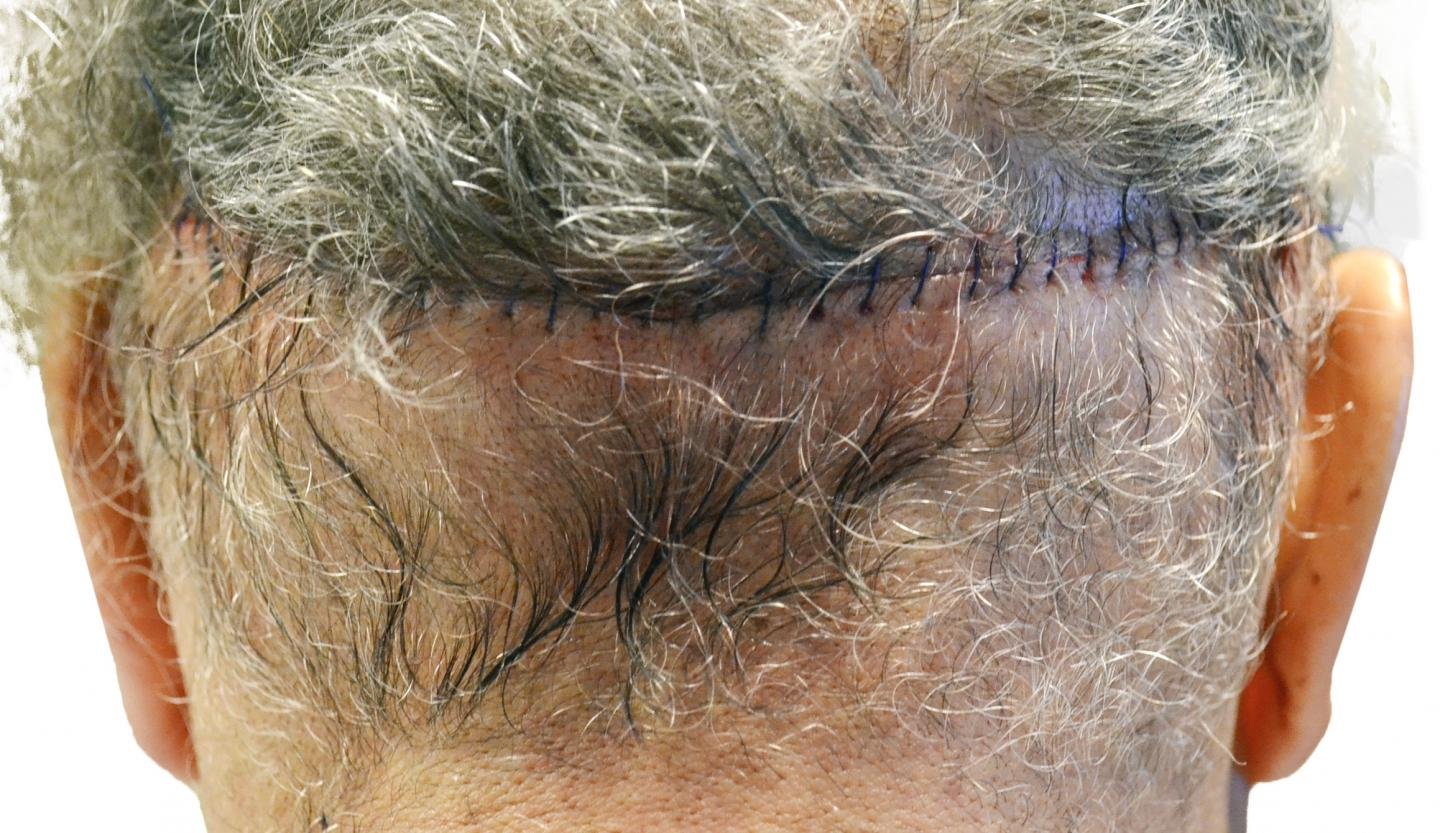Hair Loss Solution: The FUE Procedure
With Follicular Unit Extraction (commonly know as the FUE method), hair follicles are removed one by one from the donor and placed in the recipient area (top of scalp, hairline, crown).
Follicles taken from the donor area (back of the scalp) are genetically immune to the effects of DHT (dihydrotestosterone, the hormone linked to hair loss) and retain this genetic attribute even after being transplanted to the recipient areas.
After FUE procedure. No linear scar.
After Traditional FUT procedure. Visible scar.
Harvesting
When the follicles are removed from the donor, they are typically excised using a 1mm punch. That is a very tiny punch, which precisely fits over the graft containing follicle. Because the "holes" created are so small and the scalp is vascular and heals quickly, there is virtually no sign that a procedure was even performed 7-10 days after the procedure. The donor area of the scalp has very high density, therefore, it is possible for us to take individual grafts every couple millimeters without it being noticeable.
Placing
The grafts are then individually processed and counted. A physician will work with you to discuss your desired hairline, density, and objectives. Then the physician will make very small sites in the recipient area and create the desired pattern as discussed. Once that is finalized, the grafts are manually placed into the recipient sites using fine,precise forceps.
There is no scalpel, sutures, or staples with the FUE technology. This new method allows for a virtually pain free experience and a permanent hair transplant without a permanent scar.
As with any hair transplant, the results of a FUE procedure are permanent. Compared to a traditional FUT (Strip) hair transplant, the FUE approach is considered safer, less invasive, and has a faster and easier healing process. Most patients experience very little discomfort during the procedure as it is done under local anesthesia and the patient can remain awake or sleep throughout the procedure.
Some institutions use the pressurized placing tool when placing the grafts in the recipient area. We consider this a very risky strategy since there is little control over the grafts, so instead we manually place the grafts back, just like in traditional hair transplants.
Benefits of FUE
No linear scar, no scalpel, no stitches
The best choice when a short hair style is desired
Faster recovery time compared to other methods
Least painful procedure
Fewer complications than the"Strip" method
Shortest recovery and post-operative healing time
No surgical removal of a strip of scalp
Can yield high graft counts, even on tight scalps
Minimal risk of damage to vessels, bleeding, and pain from damaged nerves
Can perform large procedures in one session



